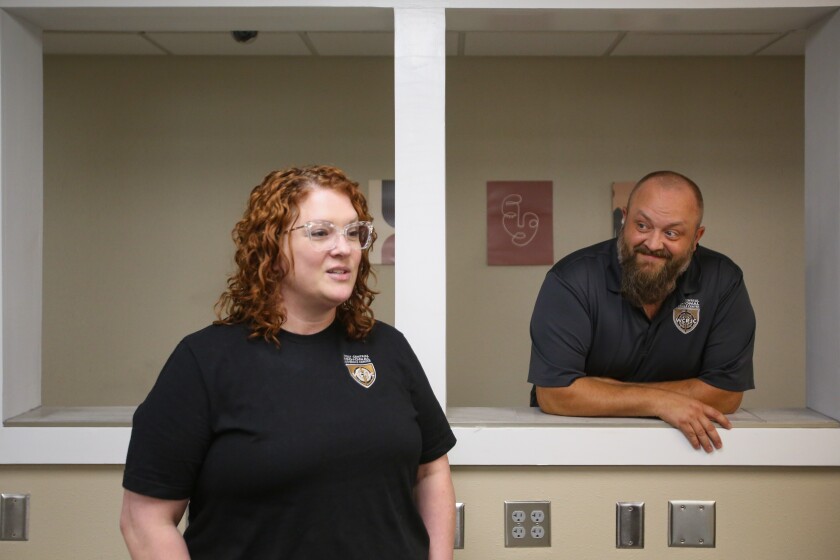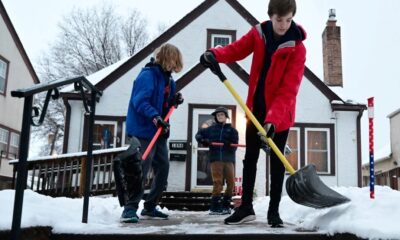Lifestyle
Staff Launch Innovative Housing Program for Troubled Teen Girls

Moorhead, Minnesota, has seen the launch of a new supportive housing program aimed at helping teenage girls with troubled pasts. The initiative, known as the Community Living Independent Programming and Skills (CLIPS) program, was developed by staff at the West Central Regional Juvenile Center despite an unsuccessful funding request from the Minnesota Legislature.
In 2024, Clay County sought $1 million to renovate a suite within the Clay County Family Service Center for this purpose. When the funding did not materialize, juvenile center staff took matters into their own hands. They repurposed $200,000 of county funds and dedicated their own time to transform the space into a supportive living environment.
The CLIPS program officially launched this spring, providing residential support to teenage girls who have faced criminal charges or are considered high-risk. The renovated suite, previously a detox unit, has been redesigned to resemble an apartment, with staff removing security bars from windows and creating comfortable kitchen and living areas. CLIPS Supervisor Jake Baumgartner expressed satisfaction with the results, stating, “Aesthetically, I love it. It’s very welcoming.”
Program Goals and Structure
The program targets girls aged 17 and 18, many of whom have experienced instability in their lives, including repeated stays in juvenile detention or being expelled from foster care. James O’Donnell, Superintendent of the West Central Regional Juvenile Center, emphasized the significance of the program. “They’re coming with a lot of baggage, and we’re helping them get through that,” he explained. The primary objective is to prepare these young women for independent living and prevent them from entering the criminal justice system as adults.
The CLIPS program is distinct from others in its approach to discipline. Unlike many traditional programs, girls are not expelled for missing curfew or for other infractions. Instead, they face consequences while still being encouraged to continue their progress. Nicole Williams, a case manager, noted that the program prioritizes individual needs over the typical requirements set by probation officers. “Here, they have that freedom, but they also have that safety net and structure,” she said.
Participants in the program can remain as long as necessary to achieve their goals. Recent graduates spent between four to six months in the program, while some may stay for up to a year. The facility is licensed to accommodate up to 12 girls, but staff prefer to maintain a smaller group of around eight to ensure personalized attention.
Skills Development and Community Engagement
The CLIPS program focuses on teaching essential independent living skills. Participants learn to budget, shop for groceries, meal plan, and maintain a clean living environment. This collaborative approach fosters teamwork and mutual encouragement among the girls. Williams remarked, “It’s really a good opportunity for them to work together, to kind of work on some of those skills and encourage one another, because, you know, learning that stuff is tough.”
Additionally, the program covers job readiness, money management, and public transportation use. Many girls secure employment while enrolled and are required to save 80% of their earnings for future independence. Participants also have access to education resources, working towards diplomas or GEDs.
Therapeutic support is a key component, with group therapy sessions focusing on healthy relationships, decision-making, and emotional regulation. The program balances structure with leisure, offering outings such as biking, swimming, and attending local sports events.
The impact of the program extends beyond its immediate participants. Staff members often receive updates from graduates who successfully transition into adulthood. “Seeing kids go into the world successfully is the reason staff do the job,” Williams reflected. “It’s the best part of our job.”
The CLIPS program represents a significant step forward in addressing the needs of vulnerable youth in Minnesota. Through dedicated staff efforts and community support, the initiative aims to empower young women to build brighter futures.
-

 Technology5 months ago
Technology5 months agoDiscover the Top 10 Calorie Counting Apps of 2025
-

 Health3 months ago
Health3 months agoBella Hadid Shares Health Update After Treatment for Lyme Disease
-

 Technology2 weeks ago
Technology2 weeks agoOpenAI to Implement Age Verification for ChatGPT by December 2025
-

 Health3 months ago
Health3 months agoErin Bates Shares Recovery Update Following Sepsis Complications
-

 Technology4 months ago
Technology4 months agoDiscover How to Reverse Image Search Using ChatGPT Effortlessly
-

 Health3 months ago
Health3 months agoAnalysts Project Stronger Growth for Apple’s iPhone 17 Lineup
-

 Technology3 months ago
Technology3 months agoElectric Moto Influencer Surronster Arrested in Tijuana
-

 Technology1 month ago
Technology1 month agoDiscover 2025’s Top GPUs for Exceptional 4K Gaming Performance
-

 Technology5 months ago
Technology5 months agoMeta Initiates $60B AI Data Center Expansion, Starting in Ohio
-

 Technology5 months ago
Technology5 months agoRecovering a Suspended TikTok Account: A Step-by-Step Guide
-

 Health5 months ago
Health5 months agoTested: Rab Firewall Mountain Jacket Survives Harsh Conditions
-

 Lifestyle5 months ago
Lifestyle5 months agoBelton Family Reunites After Daughter Survives Hill Country Floods





















